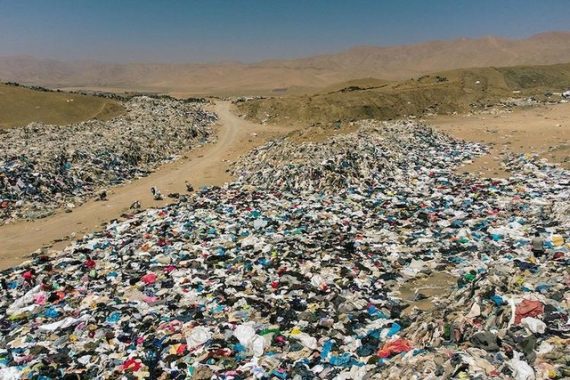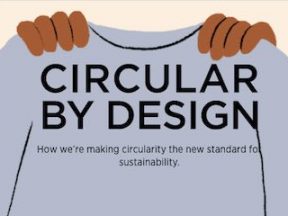What you wear is not just a fashion statement; clothes and accessories declare your outlook on the environment. Yet most people are unaware of apparel’s devastating impact on the climate.
The industry is responsible for 4.0% to 8.6% of the world’s global greenhouse gas footprint — greater than the footprints of France, Germany, and the United Kingdom combined — according to consulting firm McKinsey. Fashion also comprises up to 10% of global carbon dioxide output, more than international flights and shipping combined, according to the United Nations Environment Programme.
And “fast fashion” is the greatest contributor to this environmental calamity.
Fast fashion emerged in the 1990s as companies began to manufacture cheap clothing with limited inventory to keep up with quickly changing trends. These essentially throw-away clothes contribute to short fashion cycles, resulting in greater production, consumption, and waste. Devotees of fast fashion — mostly teenagers to early 40s — may wear an item just a few times, if at all, before discarding it.
Characteristics of fast fashion are:
- Manufactured in developing countries with cheap labor,
- Large, quickly changing assortment of styles,
- Low prices,
- Low-quality materials, including polyester, made chiefly from petroleum.
Major fast fashion brands, in sales order, are Zara (Spain), H&M (Sweden), Uniqlo (Japan), and Shein ( China). They are also the least likely or capable of being sustainable.
The Problem
While several fast fashion manufacturers claim to have changed to environmentally-friendly production, nonprofit organizations that monitor the industry say the companies are greenwashing — asserting sustainability without actually instituting sustainable practices.
These manufacturers’ claims are often promoted by paid social media influencers who consumers look to for advice.
Criticism centers around abusive labor practices, materials that are not recyclable, and disposal of unsold clothing in landfills. Eighty-seven percent of the fiber used for clothing is ultimately incinerated or sent to a landfill.

Used clothes discarded in the Atacama Desert in Chile. Source: Martin Bernetti/AFP via Getty Images.
Landfills produce methane, a dangerous greenhouse gas. Polyester has surpassed cotton as the main material for apparel products. Garments made from polyester and other synthetic fibers are a prime source of microplastic pollution, especially harmful to marine life. Synthetic particles that are smaller than 5 mm, or 0.2 inches, are considered microplastics — upwards of 578,000 tons are in the ocean, reportedly. Marine organisms ingest these particles and often die.
Workers who make the clothing are frequently paid poorly, work in dangerous conditions, and exposed to toxic textile dyes. Fashion brands say they have little control since the workers are employees of third-party manufacturers.
Critics assert that fast fashion apparel cannot be sustainable by its very nature. The poor quality of the material makes it hard to recycle, even if the brands commit to recycling a certain percentage of used or unsold products.
Last year a consumer in New York who bought an item from H&M’s Conscious Choice clothing line filed a class action lawsuit against the company for greenwashing. The lawsuit claims that many of the items in the collection are 100% polyester (which does not biodegrade) and that very few of H&M’s products are recycled, despite claims by the company.
Industry-wide, only 1% of materials from excess inventory or returns are recycled, per the Ellen MacArthur Foundation, a nonprofit environmental group.
Who Buys Sustainable Apparel?
Research from McKinsey shows that buyers of sustainable apparel are mainly higher-income consumers who are less likely to purchase fast fashion. Many younger buyers promote a circular economy but buy nonsustainable apparel anyway, often purchasing clothes they never wear, per Mintel, a research firm.
Hence fast-fashion brands and retailers have limited monetary incentives to change their ways.




